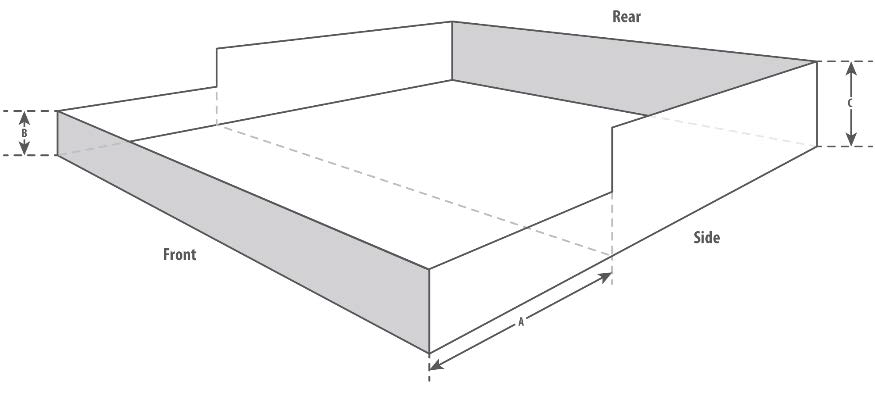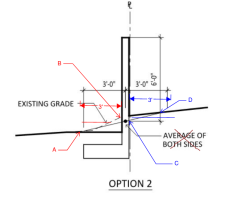danSAA
REGISTERED
Question regarding LA County Municipal Code:

The code continues with an example, which is meaningless to the above text because the image just explains how wall heights are lower in front yard setback.
Bonus question - if a home owner wants to add CMU walls around the rear and sides of their yard, but the natural drainage course of the surrounding properties drains across their property (side to side at about 7% slope), is that allowed? I'm thinking we could call for through-wall holes every 8 feet or so. But I worry that in the long term those holes will get buried and/or clogged and cause ponding on the uphill side.
What does "highest average ground level within three feet of either side" mean? Is that average of the higher side or both sides? Sketch of proposed 6 foot high CMU wall at property line:22.110.070 Fences and Walls.
A. Measuring Height of Fences and Walls. The height of a fence or wall shall be measured at the highest average ground level within three feet of either side of said wall or fence. In order to allow for variation in topography, the height of a required fence or wall may vary an amount not to exceed six inches; provided that the average height of such fence or wall shall not exceed the specified maximum height...

The code continues with an example, which is meaningless to the above text because the image just explains how wall heights are lower in front yard setback.
... For example, see Figure 22.110.070-A, below.
FIGURE 22.110.070-A: MEASURING FENCE HEIGHT

Legend:
_____________________
A = Required front yard
B = Fence height within the required front yard
C = Fence height after the required front yard
Bonus question - if a home owner wants to add CMU walls around the rear and sides of their yard, but the natural drainage course of the surrounding properties drains across their property (side to side at about 7% slope), is that allowed? I'm thinking we could call for through-wall holes every 8 feet or so. But I worry that in the long term those holes will get buried and/or clogged and cause ponding on the uphill side.

